Saturday, July 17, 2010
23 Things. Complete
This program has given me the opportunity to see what it is like to join the online dialogue about education, technology, and how rapidly ideas are given, shared, and implemented. This will help me grow in my profession, and keep up with what I can do for my students, and with my students in using technology.
Overall, there were not too many surprises, just a whole selection of how I can use these tools with my teaching, and professional development. I appreciate this since I am constantly searching for ways to improve upon. I would not recommend any other improvements for this course. It is organized, and flows well.
If there was another discovery program like this in the future, I would likely participate in it.
I will use the tools I have learned to improve my teaching, and help bring my students online in mathematics, and their education. If they can learn to use cyberspace to understand concepts, and share their ideas, I think it will be rewarding for them. I plan to go back, and examine the tools I can implement right away for them to use.
I like the RSS feed to keep up with bloggers, and new ideas that I can use. It will not be difficult to follow, as I have been glancing at it every other day or so. There is so much information, but with practice, weeding it out is not too difficult.
Thing # 23 Educator’s Networks Ning
I found resources in the area of high school educators, and mathematics useful, and valuable. Each discussion offers a resource in the postings. There was one resource on video lessons about math, another on accessing resources from someone’s wiki, etc. It is a good place to go to find resources, and ideas.
In looking at these educational social networks, I think we have access to one in our district, and I plan to use it this year with my students. Moodle is the tool I am referring to. It is a good site to have students share their ideas, make journal entries and take quizzes. It is a little more controlled than a social networking site, in that I facilitate what we do with it, but it is still an area where ideas are shared, and resources may be found.
Thing # 22 – Facebook, social networking
It is important for educators to know how social networking operates due to relating with their students. Our students use social networking countless times a day, and this has impact on their lives. If we can incorporate these networks into our lessons, and connect them with our subjects, students will feel engaged.
I have been using facebook since it started when I was in college. The site is a time consumer, as it is basically a personal blogging site with all the whistles added on. It also enables information to be given at lightening speed, which can affect student’s lives. We need to be aware of this, and understand the source of cyberspace, and where it is originating.
I like facebook because you can stay connected with people you normally would not talk to. I am friends with people I knew in elementary school, and keep up with them through the site. I also keep tabs with people I went to college with, and my family. The reason I don’t like facebook because it consumes time when face-to-face conversations are much more valuable. It seems to degrade our methods of communicating. It is also a place where people may gain information that you would not wish for people you not close with to see, which is why the privacy filters are appreciated. I am on facebook, but have a hidden profile to those who do not have any connection with me. I am not very fond of the social network, so I appreciate the privacy.
LinkedIn has the most useful features in networking with people on a professional level. It is easy to find co-workers, and see who they know, put your resume online, so people can give, or request advice from you. Then you can find other people who know others in your professional field, and possibly some who aren’t, but relate to what you do.
This link connects to my profile for LinkedIn.
The only educational application I can see is a pursuit of professional development using LinkIn, and staying connected with colleagues, and staff members on facebook.
Thing 7b – Math Reasoning and Practice Patient Problem Solving
In this entry, our author has identified a teacher who examines the way we teach mathematics, and why students are not learning the concepts. Dan Meyer compares our textbooks that students use to sitcom shows like Two and a half men. He claims since students are so used to being entertained with three-minute commercials, and seven minute runs that they do not pay enough attention to learn what he’s teaching. I think this is very true.
Dan Meyer lists five symptoms that students have that demonstrates this need for instant gratification:
Lack of initiative
Lack of perseverance
Aversion to word problems
Extremely low retention
Eagerness for formulas
All of these are forces students bring with them to combat their own learning. Math requires two very important concepts to understand and learn the standards and objectives. In math it is about math reasoning, and patient problem solving. Meyer’s points out that this can be achieved through breaking apart the word problems into separate pieces. Then the math may serve the conversation, since the conversation does not serve the math. He suggests we give each problem to the students with a visual, and a question. Let them figure out the structure, and steps to answer the question. He forces them to think about what they need, instead of giving them all the information needed to solve the problem, which is not reality.
He also uses multimedia in his lessons to present a real situation for students. This allows them the real world-view, and gives them another perspective to see.
I found this presentation very interesting, and enjoyed the way Meyers presented his idea of pin pointing math reasoning, and patient problem solving to improve and combat all the experiences, and behaviors that students come into class with.
Thing 21 – Google Tools
I looked at igoogle, and the picasa google tools, and I find both nice to keep information organized. Picasa is a nice place to store photo albums, and organize pictures, as well as edit them. It would be good to use for providing students with a library of organized pictures through creative commons, so they would not have to worry about copyright. I could also find pictures that suit what they would need to learn.
Here is a link to one of the albums I created on Picasa Web Albums.
The igoogle tool is neat, because I can keep track of what I need in the weather, the news, daily comics, and puzzles, etc. This would be a good tool to get small engaging pieces from to use with students.
In examining the tools, I can see sharing the calendar with colleagues, and students, letting them know when assignments, and projects are due a head of time. These are a few topics I came up with from the google tools, what other suggestions do you have for using these applications?
Friday, July 16, 2010
Thing 20 – Google Docs
I could use this to see what students know before we begin a unit by having them fill out a KWL chart on a spreadsheet or word document. I could also use it to create a class presentation, with each pair working on one concept, being responsible to teach it through two or three slides only. Then, his or her class can see the full presentation of the lesson through everyone’s slides put together.
Thing 19 – Voice Thread
This application is really neat. It enables one to have an online classroom, and enter in to discussion with teachers, and students. You can also see all the different points of view that are being added to each picture, or interaction.
For math, students can look at one problem in a group, and each can show a different way to solve a problem. They can also talk about what implications that has. There is always more than one way to solve a problem. With the solving of these problems, instead of presenting once in class, they would be saved, and other student groups could view them, add to them, and reflect on what their peers are seeing, and what they are seeing.
Another idea for voicethreads is to have students make a lesson teaching elementary students how to add, subtract, multiply or divide. This way they can have a better understanding and grasp on the fundamentals of math.
You can also use voiceThread to collaborate with colleagues in adding to lessons, and planning ideas, offering ideas on professional developments, and further growth in teaching. When we collaborate, we learn more from one another, and integrate ideas to make our lessons, and teaching stronger.
Voicethread is pretty neat, and I will find a way to implement it for my students.
Thing 18 – Video Share. Do YouTube? I do!
YouTube is so full of videos, it is unbelievable what we can do with technology. I can use this to share ideas and concepts with my students in lessons, to take a brief break in their practicing to watch another way to approach the problem. Videos can also be shared in blogs, and online in my moodle. I can have students watch a video from YouTube or teachertube, and they can write a reflection on what they gained, or found helpful in their learning. I know they won’t be able to see these videos at school, so I would give them a longer amount of time to get to the assignment, and see the video on their own time.
I found several videos on how to do “5 second math” and frankly, the idea is really neat, but now my task is to derive or find out how the author discovered those patterns, and broke the code of why those simple ways work. I know it starts out with the fact that the only numbers we work with are the ones in our base 10 system. My strength is not arithmetic, and these concepts are very interesting. I would just like to know how, and where those tricks came from. I am sure the pattern is simple. I will be contemplating this for a while…
See one of his videos below:
Videos are really helpful in learning since they are a mix of verbal, and visual, and on YouTube, you can find the same topic explained, used, or presented from many different points of view, which is helpful in forming an understanding.
Thursday, July 15, 2010
Thing 17 – Podcasting
I thought the podcasts over math were really neat. They present a different way to examine mathematical ideas and problems. I really liked the http://www.mathgrad.com/ which gave an example of how to solve a rubix cube by looking at the pattern of the math in the rubix cube puzzle. I liked this podcast, because it demonstrates mathematical problems that people encounter everyday. I could use this podcast to show students concepts that we are working with in class. It will help them by seeing a different way to understand the problem, and hearing the same concept explained by someone else to give them another point of view. I think this is very important in math, as students need to realize there is more than one way to solve a problem, and also to learn the math.
The podcast from http://mathfactor.uark.edu/ is similar. I like it because it has at least two speakers discuss problems, and walk through how to do them. I like their collaborative approach, as it models for students how to discuss and solve problems while talking through them.
The last podcast I looked at, http://www.dansmath.com/pages/podpage.html
did not intrigue me very much. The speaker didn’t seem to get to the math soon enough. He spoke a lot about what was occurring with him, which was not my goal in listening to the podcast.
I have not used podcasting in the classroom, but I will link podcasts to my moodle, so students can listen, and reflect on what they hear. Podcasts will be good to integrate with these two tasks, listening, and then writing, so students and I can see their thinking.
Friday, July 9, 2010
Thing 16 – Library Thing
This is also a great resource to see what books are good for demonstrating concepts. I want to build a small library of childrens math books to let my students use if they need a refresher or any holes to fill from their past learning of math. A childrens book, or even a novel concerning math can help them connect and understand the concepts more concretely.
Before I was searching for these books using google, now I can see it is much better to use Library Thing, and I look forward to doing so.
Thing 15 – Tagging
My delicious web access is http://delicious.com/msblamica
I have bookmarked and tagged math sites for teachers to get resources from, and also for students to explore. I want to have links on my moodle for them to access during the year if they need to work with a concept more, and in a different way, I can link these resources for them on my moodle page.
Tuesday, July 6, 2010
Thing 7A – Google Reader on Critical Thinking
This post “Critical Thinking is more important than ever amidst Internet-based denier propaganda” concerns the need for our students to understand and be able to critically think in order to eventually contribute and be citizens in this 21st century. This post was very informative, and a little scary. It points out the fact a lot of people take things at face value, and do not question them, but accept them through ideologies, and biases. The author calls these people deniers. This is dangerous, I think because if we don’t challenge our students to learn how to learn, and become thinkers, we are gypping them, as well as ourselves. In order for our students to learn how to think, analyze and question information, we need to be practicing this. In order to be a citizen of society, I think it is important to look at more than one resource. The author noted that a lot of marketers work in doubt, and obsfucate, which means to confuse the truth. Believing this doubt is from giving in, and not looking elsewhere for information.
This is especially important with today, and how fast we can get information. As our author describes, we can see the same story ten times, but this does not mean it is true. We need to do research, and seek the truth to really understand the situation at hand. Looking at what information we are given on Wikipedia is a perfect example of this. We do not take the information as we see it, but we question it, and search for answers in reliable sources to see if it is true. Critical thinking is crucial to keep people in our society contributing, and not blindly accepting of what they see, read, and hear.
Thing 14 - Explore Galore!
I explored Blabberize, TimeGlider, TadaList, and Wordle.
Blabberize was overall a lot of fun to play with. I made two funny items from pictures on my computer. It was really easy to use. I can see using it in a lesson with a picture, and relate it to the lesson, a fun way to keep students engaged. It can also be used as part of a project for them to keep their audience engaged.
TimeGlider would be good to use for my students tracking their own goals, and defining how they may accomplish their year-end goal. I can also use it to show students our class goals, and what we have accomplished during the year.
Wordle was the last Web 2.0 Tool I explored. I made one using a quote about math, “Pure mathematics is, in its way, the poetry of logical ideas.” ~Albert Einstein, but it was lost in the Internet when I clicked on something. When I tried to get it back, my attempt was unsuccessful, so I will make a different one again. I thought about printing out worldes to decorate a little of my room with, and allow students to see them and discern what each one says. I also think it would be neat to use for bringing together writing, and math. In a wordle, students can describe what they did to solve the problem, and provide what they wrote to achieve their results. Or I could ask them to write down their goals, and define how they will achieve them with wordle, so only they will know exactly what they said, and they will provide me with a transcript of what they wrote.
These are my findings and brainstorming for each of the above tools. Can you think of anything else to add, or something new for any of them?
Thank you for reading, I do appreciate the feedback.
Saturday, July 3, 2010
Thing 13 – MaSh-Ups
I like that they enable and utilize creativity in each ending product. They give our minds the ability to discern what we see. Below, you will find my name, and what I call my classroom. I think in order to see the whole name, and description, you will need to spell it out using each letter, then tie it together since it is not narrow enough in width to fit on one line. I’m sure there is a way to do this in html, but I am not sure how…
My name:















What I call my classroom:






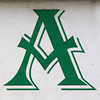
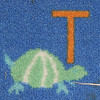


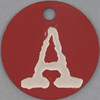



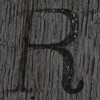

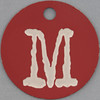
Some items I made from Image Chef:



Ideas for use of mash-ups:
Where can I find math in my favorite vacation/location? (using mappr)
Making a slideshow about you on website/moodle/blog, etc.
Creating a Welcome show for students to see
Using signs creatively during lesson/notes
Using a Mash-up to introduce a new concept
Using Mash-ups to illustrate my moodle, and keep it interesting for each unit we encounter.
Pretty neat! I had fun creating the ones above. How often do you use mash-ups?
Friday, July 2, 2010
Thing 12 - SLIDESHOW!!
Let me know what you think!
Artists to thank, and links to photos:
http://www.flickr.com/photos/a4gpa/2428016609/
by a4gpa
http://www.flickr.com/photos/nonanet/95892127/
by nonanet
http://www.flickr.com/photos/a4gpa/2428014203/sizes/l/
by a4gpa
http://www.flickr.com/photos/a4gpa/2428809800/
by a4gpa
http://www.flickr.com/photos/sapphir3blu3/2742622618/
by Sapphireblue
http://www.flickr.com/photos/elsie/144702426/
by Elsie esq.
http://www.flickr.com/photos/28481088@N00/2631082352/
by tanakawho



